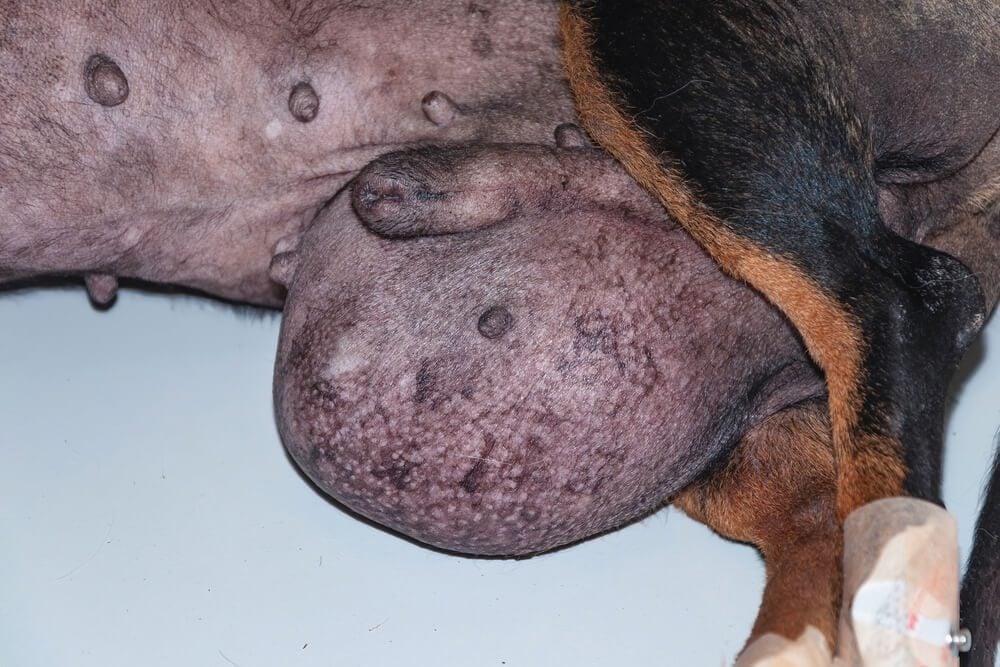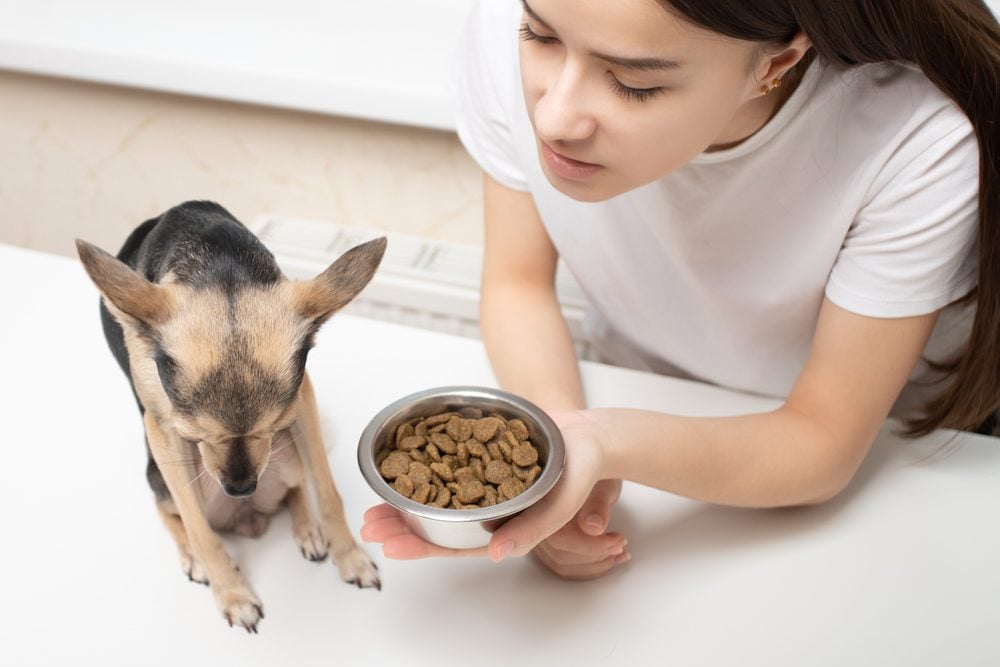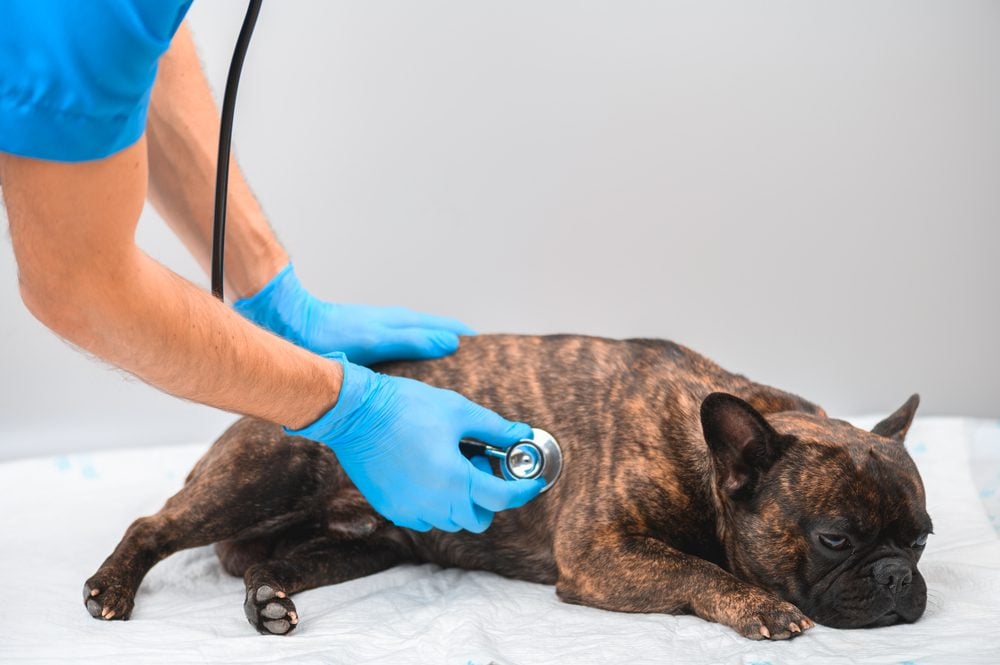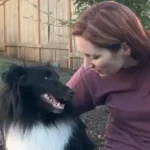A Pet Owners Guide to Testicular Cancer in Dogs: Causes, Symptoms, and Treatment

Table of Contents
What is Testicular Cancer in Dogs?

Testicular cancer in dogs is a tumor that develops as a result of the uncontrolled growth of cells in the dog’s testicles. Based on which testicular cells start growing abnormally, there are several types of testicular tumors in dogs.
The three main types of testicular tumors are:
- Sertoli Cell Tumors. Sertoli cell tumors start in the Sertoli cells which are the cells that are responsible for sperm development. Compared to other common genital neoplasms, Sertoli cell tumors have a high spreading tendency and are particularly frequent on undescended testicles.
- Interstitial or Leydig Cell Tumors. Interstitial cell tumors develop from Leydig cells that produce testosterone. These tumors are small, rarely spread, and do not cause significant signs and symptoms. In most cases, Leydig cell tumors are an accidental finding.
- Seminomas or Germ Cell Tumors). Seminomas stem from the germ cells and are classified as tumors of normal sperm-producing cells. Seminomas are linked with feminization and bone marrow hypoplasia (damage of the cells of the bone marrow). However, they are usually benign with low spreading tendencies.
Interestingly, one-third of dogs with testicular cancer, have more than one type of testicular cancer cells. In other words, it is not uncommon for several types of testicular cancer to be present in one dog at the same time.
Other less common types of testicular tumors are embryonal carcinoma, hemangioma, fibroma, lipoma, teratoma, and chondroma.
The common forms of testicular tumors are usually benign. However, in rare cases, they can be malignant and spread to other organs like regional lymph nodes, lungs, liver, and adrenal glands. Obviously, the prognosis is different for different types of testicular tumors.
How Common is Testicular Cancer in Male Dogs?
Testicular cancer is not very common among intact male dogs. In general, testicular tumors account for about 4 to 7% of total canine tumors.
In a study, “Canine testicular tumors: a study on 232 dogs,” 27% of unneutered male dogs had one or more testicular tumors. In the past, the incidence of testicular cancer in dogs was 16% which shows a significant increase.
When do Dogs Get Testicular Cancer?
Testicular cancer is more common among older dogs. The risk for testicular cancer goes up at around seven years of age. Older intact male dogs (over 10 years) are at an especially high risk of testicular tumors.
What Causes Testicular Cancer in Dogs?

The cause of testicular cancer isn’t straightforward. In most cases, testicular cancer is caused by a combination of various risk factors such as:
- Age. Testicular cancer is more common in older dogs. Dogs over the age of seven are more likely to develop some form of testicular cancer.
- Sex. Obviously, testicular cancer only occurs in male dogs.
- Breed. Certain dog breeds have an increased risk of getting testicular cancer. Such breed dogs include Boxers, Afghan hounds, collie dogs, German Shepherds, and Malteses.
- Castration status. Neutered or castrated dogs cannot develop testicular cancer as they miss the normal cells that make up the testicular tissue.
- Cryptorchid testicles. In cryptorchid pets (pets in which one or two testicles fail to descend and remain in the abdomen), the undescended testicle is very likely to form tumor cells. The most common tumors in cryptorchid pets are seminomas and Sertoli cell tumors.
What are the Signs of Testicular Cancer in Dogs?

The most telling sign of testicular cancer in dogs is the change in the appearance of the testicles. The change is different among dogs. Some of the signs of testicular tumors in dogs are:
- Masses on the testicles
- Enlargement of one or both testicles
- Behavioral changes.
Other sex-related signs of testicular cancer include penile atrophy and feminization. Feminization refers to the development of feminine characteristics in a male dog. It is due to the production of the female sex hormone estrogen by the tumor cells.
Sertoli tumor cells are the most likely to cause feminization in a male dog. Signs of feminization include:
- Symmetrical hair loss
- Elongation of the nipples and breasts
- Enlargement of the mammary glands
- Attraction of other male dogs
- Squatting to urinate
- Decreased or absent sex drive
In addition to the sex-related signs and symptoms, a dog with testicular cancer may also develop common clinical signs and symptoms of illness such as:
- Loss of appetite
- Weight loss
Diagnosing Testicular Cancer in Dogs

Diagnosis of testicular cancer in dogs usually starts with a physical examination. During the exam, your vet will inspect the appearance of your dog’s testicles to check for physical signs such as swellings and changes in size. If there is suspicion for testicular cancer, the vet will perform a scrotal ultrasound.
Then to confirm the diagnosis, the vet is likely to order fine needle aspiration (FNA) . Fine needle aspiration involves the extraction of a sample of your dog’s tumor cells using a needle. The cells are then inspected under a microscope to determine if they are cancerous or not.
Your vet might also perform a biopsy on your dog. A biopsy involves the excision of a tissue sample from your dog’s tumor to check for cancerous features and stage.
If necessary, the vet will also perform other tests like a complete blood count (red and white blood cell count and biochemistry panels), urinalysis, abdominal radiographs (x-rays), abdominal ultrasound, CT scan, and others.
Diagnosing Testicular Cancer in Dogs?
There are several treatment options for testicular cancer in dogs. Each approach has its pros and cons and more often than not, more treatments can be used at the same time. Here are the most common cancer treatments.
Surgical Removal. Primary cancer in dogs treatment option for canine testicular tumors is the surgical removal of the tumor and both testicles. Surgery is often recommended for small benign tumors that haven’t spread to other parts of the body. For most types of tumors of the testicles, surgery is curative. However, bleeding and anemia are possible complications due to bone marrow damage and the anesthesia risk must be evaluated in older patients.
Radiation Therapy. If the tumor has spread to other parts of the body, then the vet will recommend radiation therapy in addition to the surgery. In a study “ Radiotherapy of metastatic seminoma in the dog. Case reports.” by McDonald RK it was shown that radiation is efficient in the treatment of seminomas with metastasis.
Chemotherapy. A study “Treatment of aggressive testicular tumors in four dogs” by Dhaliwal RS showed that the use of cisplatin is efficient in the management of testicular cancer in dogs. In the study, same as in practice, cisplatin is used in conjunction with castration.
The best type of treatment for a cancerous tumor depends on the type of tumor, stage, and general health of the dog. In addition to the mainstream treatments, it is helpful to add some holistic cancer treatment options. Talk to your veterinarian about using CBD products.
Cannabidiol (CBD) Products. Holistic veterinarians are raving about the use of CBD products for dogs with cancer . We strongly recommend the vet-approved CBD products from the Honest Paws CBD Relief Collection. These CBD products are made with high-quality organic hemp-derived CBD that is health-boosting and easy to use.
What can I do to Prevent Testicular Cancer in Dogs?
Sadly, there is no one, efficient way of preventing testicular cancer in dogs. This is devastating for pet owners wondering how to prevent cancer in dogs .
However, there are things you can do to lower the dog’s risk of developing testicular cancer. Castration decreases the chances of prostate gland cancer and testicular cancer in dogs. The procedure is especially important for dogs with an undescended testicle (cryptorchid pets).
Otherwise, encourage your dog to live a healthy lifestyle. A healthy lifestyle for a dog involves a good diet, regular physical activity, and mental well-being. It also includes regular vet checkups and physical examinations.
We understand that veterinary care, the same as the treatment of testicular cancer in dogs can get very expensive. Luckily, they are manageable with a good insurance plan. With the OneVet Insurance Plan, you get 24/7 access to a licensed vet, a $3000 emergency fund, and coverage for all existing conditions, no matter your dog’s age.
Can Dogs Survive Testicular Cancer?

Yes, testicular cancer often has a good prognosis. If the cancer is caught in its early stages and adequate treatment is provided, there is a very high chance of complete recovery.
However, if the cancer is diagnosed late or not treated in time, it can be fatal.
















